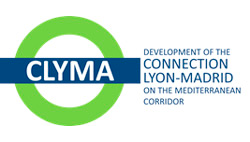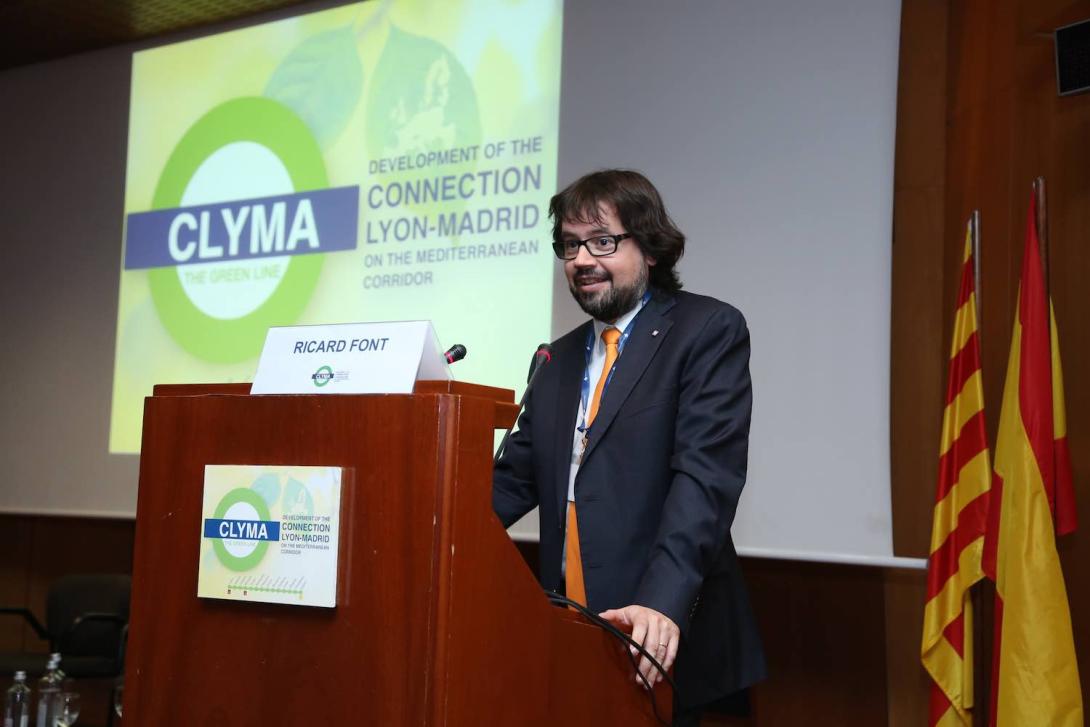
Project leader
Project partners
States involved
The project
Project focused on analysing the transport of goods in a part of the Mediterranean Corridor, the Lyon-Madrid axis, which presents a large volume of road transport that could be carried out through multimodal transport with an adequate network prepared for it.
The Trans-European Transport Network (TEN-T)
Europe currently has a heterogeneous set of roads, ports, railways, and communication routes whose Lack of cohesion negatively influences the efficiency of freight transport. The Trans-European Transport Network (TEN-T) was created with the aim of transforming Europe into a unified, sustainable and efficient transport network that connects all European centres and their hinterland. Divided into two levels, the global network is expected for 2050, and the basic network for 2030.
The Basic Network focuses on the development of a multimodal transport network, made up of nodes and multimodal links, aimed at connecting European countries and improve their competitiveness. The Mediterranean Corridor is part of the global TEN-T project.
The Mediterranean Corridor
Using the Mediterranean Corridor and the Lyon-Madrid axis as a base, which is already in operation, the CLYMA project arises, which focuses on studying organisational, conceptual, environmental, efficient management, infrastructure, information technology, and implementation aspects.
The objective is to create an integrated transport corridor that facilitates the interoperability of the different modes of transport, in a fluid and sustainable way, and to use the results of these studies to develop a structure that can be extended to the rest of the corridor. Likewise, they will speed up the execution of projects for the TEN-T.

Project activities
The activities were:
- Analysis of the current and future situation of the Madrid-Lyon axis.
- Carrying out studies for the development of an intermodal corridor.
- Creation of an intermodal management structure for the Madrid-Lyon axis in the Mediterranean Corridor.
- Development of the 'green corridor' concept in the Madrid-Lyon axis of the Mediterranean Corridor.
- Development of a strategic plan for the integration of ICT at the level of the agents of the axis.
- Carrying out strategic development actions in the Madrid-Lyon axis.
- Promotion of the Madrid-Lyon axis.
- Pilot actions carried out in relation to the management of railway infrastructures in port environments.
- Comparative analysis of reference intermodal models in Europe (railway-port).
- Management and organisation.
Results obtained
Some of the results obtained are:
- It is Study on Demand on the Madrid-Lyon axis.
- Catalogue of intermodal terminals and services associated with the axis.
- Report on current limitations with international track gauge.
- Identification of the needs of terminals and services for the development of an efficient and competitive intermodal supply.
- Analysis and evaluation of the management of the Madrid-Lyon axis currently and in the future.
- Design of a Management Model for both the Hub and the Corridor.
- Technical diagnosis of the infrastructures of the Madrid-Lyon Hub.
- Preparation of the CLYMA intermodal Action Plan.
- Recommendations to define an administrative structure on the Madrid-Lyon axis.
- Proposal for a standardised system to measure the sustainability of transport services in the corridor.
- Development of the Green Corridor in the Madrid-Lyon axis, integrating ecological objectives into the plan for the future development of the corridor.
- Creation of the Green Corridor manual for the Madrid-Lyon axis.
- Development of the ECOCalculator to calculate CO2 emissions and other pollutants on the Madrid-Lyon axis.
- Global analysis of e-freight needs between agents and administrations.
- Carrying out construction studies:
- Accesses to the ports of Barcelona and Tarragona: development of a construction project for internal connections. As a consequence of the CLYMA project, the Port of Barcelona presented a proposal for New Rail Accesses (INEA) in the 2014 call for the CEF programme, which was approved.
- Expansion and improvement of Zaragoza Maritime Terminal. As a consequence of this study, tmZ requested funds in the CEF 2014 call to carry out the constructions studied.
- Study on the implementation of a railway station (Lorry-Rail) in Zaragoza and Tarragona (case study: implementation of a multi-client freight train with origin in Zaragoza and destination in Germany).
- Analysis of the requirements for the creation and development of a railway motorway in the axes to mitigate bottlenecks on the Madrid-Lyon axis lines.
- Creation of a web page to promote and inform about the Mediterranean Corridor, initially focused on the Madrid-Lyon axis, and extendable to the rest of the Corridor, as well as an informative brochure, a summary book, a report on cross-border problems and 3 informative leaflets.
- The project has been presented 18 times in 14 cities, as well as in 8 fairs and congresses in 6 different cities as at the SIL Barcelona Logistics fair in 2016 and at the TEN-T Days 2016 in Rotterdam.
Leadership of the Port Authority of Barcelona
The Port of Barcelona, as Project Manager of this project, has coordinated its development and has been actively involved in carrying out the various studies and analyses that will make it possible to establish the bases of the Trans-European Transport Network.



